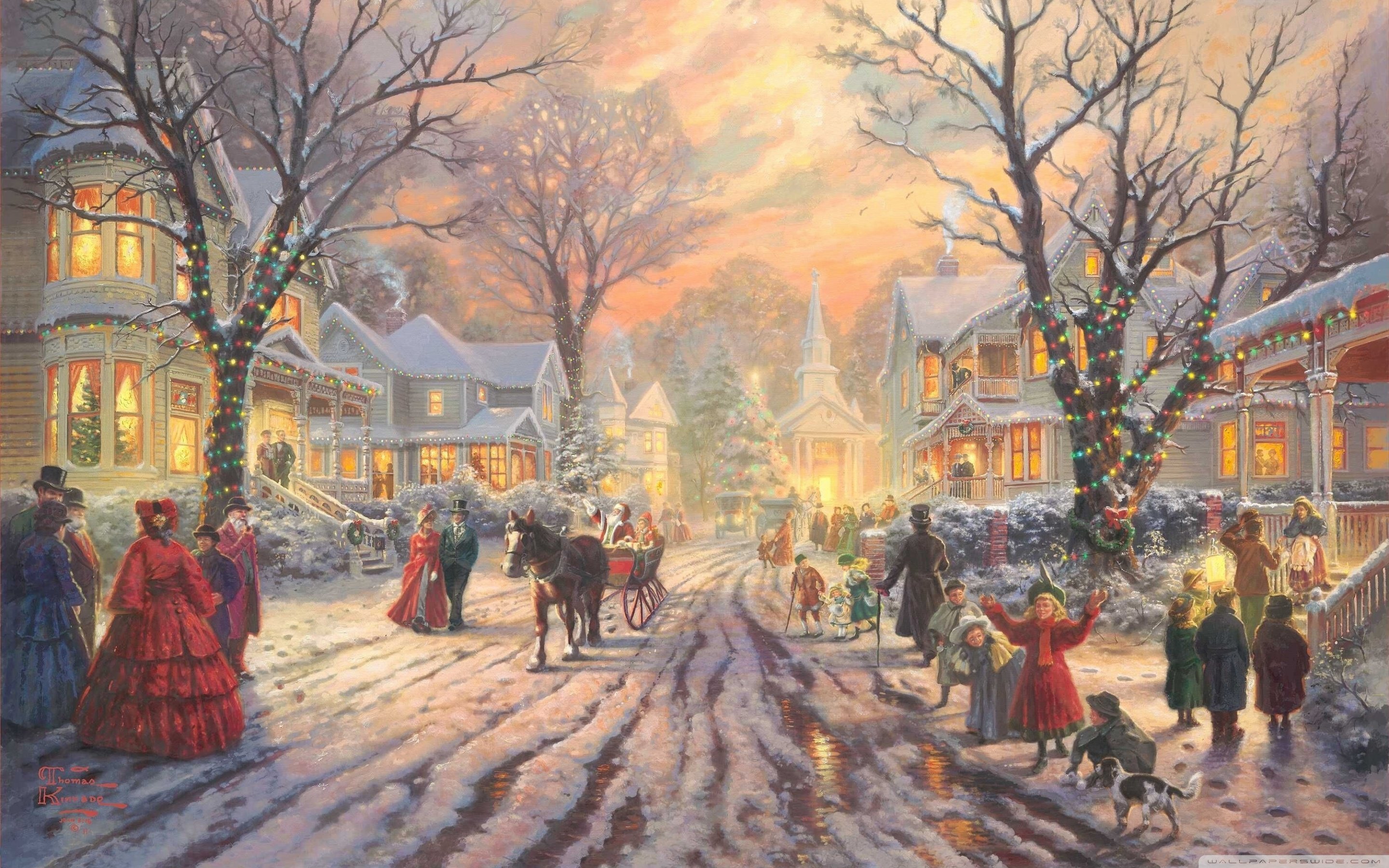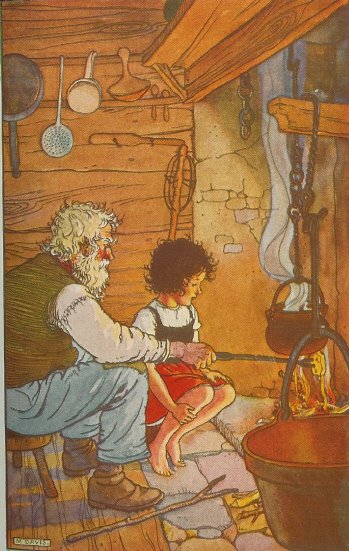Some two thousand and sixteen years ago in the fullness of time our Lord Christ, second Person of the Trinity, by, through, and to whom all was made, bridged the divide between God and Man, condescended to earth, was born to the royal line of Judah, the final claimant to the throne of David. Following prophecy and signs in the heavens kings from the East journeyed far to bow before the newborn Scion of Zion and rightful King of all kings.
His Advent inaugurated the anno Domini (A.D.), the year of His Dominion, the dawn of the Millennium, and His Imperium over all the nations.
Consonant with the proclamation of His Lordship over all the peoples of earth, with its celebration of holy domesticity, and the profound culturescape of custom, song, and imagery gendered around it, Christmas presents the denizens of contemporania with a tapestry of all that they most resent and fear. The Christo-supremacy which Advent announces over the nations is the central offense, but tied up with it intrinsically are the twin offenses of familism and “white supremacy”: because Christ’s incarnation is set within the context of a family, the vindication of a hereditary line (the royal house of Judah), and the “blessing of all the families of the earth” (Gen. 28:14), it is condemned for clannish patriarchy. And by fulfillment of prophecy, “the isles of the Gentiles” (Gen. 10:2-5) who “await[ed] His law” (Isa. 42:4) and the latter inheritance of Japheth (Gen. 9:27) caused Christmas to be interpreted wholly through a European frame of reference which is manifest in all the traditional accoutrements of the season: be it the association of Christmastide with snow, the yule log, spiced wine, rummy ciders, egg nog, wassail and late harvest ales, roasted chestnuts, cookies, cakes, mints, holly sprigs, evergreens, wreaths, carols, sleigh bells, candles, colored light, tinsel, the quintessentially European imagery of “Father Christmas,” etc., all of these form a tableau of deepest offense known colloquially as “The War on Christmas.” A Kristmaskampf, if you will.
Desperate to impugn the Incarnation, Christ’s enemies revisit us every year with allegations of Christmas coming of pagan origins in Druidism, Odinism, or Roman, Babylonian, Assyrian, Canaanite, or Egyptian myth, depending on who you ask – and none of them agree exactly. But if the skeptics see in Christmas everything except Christianity, and insist on interpreting it as everything and anything so long as it isn’t the one thing it was declared to be from the beginning, well, so much for Occam’s razor.
Perhaps the most popular allegation is that Christmas is really just a Christian veneer applied to the pagan holidays of Saturnalia and Sol Invictus; never mind that neither fall on the 25th of December. As it turns out, Christmas shares the date of its celebration with no holidays of the pagan pantheons of Europe. But the Sadducees’ secondary accusation is never far behind that: “There’s no proof Jesus was born on that day!” But Dr. Taylor Marshall, Rev. John Stormer, and many others have vindicated the rationale behind the traditional dating of Jesus’s birth to the satisfaction of any honest man.
But while attempting to deconstruct Christmas from without, the Left has also sought to undermine it from within. Hence the commercial secularization of the holy day. And that process of de-Christianizing Christmas is one which may be charted in the holiday songs of the twentieth century. In the 1920s Jewish songwriters began rather inexplicably turning their hand to Christmas carols. Well, “carols” isn’t exactly right; more like jingles. And the Left gloats fondly over the fact that the most avowedly anti-Christian demographic making up less than 2% of the population “wrote all the best Christmas songs.” Granted, the Jewish-authored ditties had catchy melodies with charming lyrics about chestnuts, Jack Frost, and sleigh bells in the snow. Lots of nostalgic comfort words, but no Jesus. Which only belies the shrewdness of their method. But even their quaintest croons like Irving Berlin’s “White Christmas” have in recent times been repudiated as too White and too Christian. Which is to say, the Left will not long abide even those oblique associations to European folkways.
Even the White House took a direct hand in this subversion from within last year when the Obamas – er, uh, Soetoros, Davises, or whatever their real name is – attempted to redefine Christmas in terms of Leftist sentiment, outrageously describing the moral of the Charlie Brown Christmas Special, and Christmas itself, as “Tiny trees just need a little love.” Which of course, rightly led Christians to laugh them to scorn. Of all the pieces for Barry to attempt a rewrite on, Charlie Brown’s Christmas may have been one of the worse choices, because Charles Schulz’s whole theme therein was a rebuke of Christmas’s secularization!
But it really isn’t surprising that this organized attempt to subvert Christmas began in the 1920s in particular. It is well documented that the dawn of radio in the 20s came as a set with subliminal messaging, i.e., mind control. And the CIA went on to use the medium of scientifically-crafted subversive music by funding and running the Greenwich and Laurel Canyon music scenes from the 40s through the 60s, thus driving the counterculture against Christendom.
But the touchpoint — the perceived need on the part of the cultural Marxists — which likely spurred this top-down recontextualization of Christmas in song was the chorus of “Silent Night” which affected “The Christmas Truce of 1914.” There in No Man’s Land, the orders of bankers, presidents, and generals were overruled by the Prince of Peace. Christian would not slay Christian on the night of the Lord’s Advent. Celtic Thunder performs a tear-jerking ode to the truces which followed in 1915, and the phenomenon continued each Yuletide throughout WWI, albeit with penalties of increasing severity. But the fact remained that the birth of the Kristkindle had the unique power to stifle the designs of the Internationalists. Christmas was a threat to their plans of world domination.
So it was in the years immediately following that unbelievers – Jews, mainly – rallied to remove this impediment to the Comintern by denaturing Christmas in the popular mind. And by WWII neither the English nor the Americans retained the strength of conviction concerning Advent which compelled their predecessors to observe the Pax Christi.
Of course, Santa Claus is the symbolic personification of Christmas familiar to us all, and though he may bear superficial resemblance to Odin, it is only because he embodies the grandfatherly image bred in the psyche of Northern Europe for millennia – the pious, strong, wise snow-maned, Opa bearing gifts and hearthside stories on cold winter nights.
Congruent with those old familial loves, it was this same grandfatherly ideal which Germanic and Celtic converts saw in the legacy of the real Saint Nicolas of Myra: a true shepherd of the flock, defender of children and of Christ’s Lordship. It was, after all, Nicolas who at the Council of Nicaea defended the divinity of Christ with both words and blows against the heretic Arius. Here was a patriarch whom Northmen respected – a doting father who would not lay down his charge short of death.
It was neither Odin, nor Lugh, Jove, nor any other heathen god who had power to establish peace between the kindred tribes of Europe and arrest the Brother Wars. It was Christ alone. This is what the enemy fears – the reign of Christ in the hearts of the nations. And our people’s only hope is that once more “a Child shall lead them” (Isa. 11:6).
Merry Christmas to you and yourn.
| Tweet |
|
|
|






